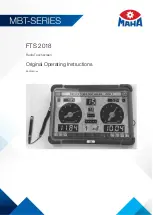
Chapter 7 - 7SR157 Applications Guide
© 2016 Siemens Protection Devices Limited
Chapter 7 - Page 7 of 14
2.6
Check Synchronising Settings
The check synchronising operation of the relay is used mainly in switching operations which link two parts of a
system which are weakly tied via other paths elsewhere in the system. In this synchronous system there should
be no frequency difference across the breaker but significant differences in phase angle and voltage magnitude
may exist due to the transmission line characteristics such as its length and type of loading.
For
25 Check Sync
operation the relay should be set to the maximum phase angle and maximum voltage
difference which still permit the circuit breaker to close without causing large disturbances to the system. For most
systems the
25 Check Sync Angle
can be set between 20° and 30°. There should not be any slip frequency but
a setting of 50mHz is typically applied as a check against loss of synchronism. Table 2 shows some possible
check synchronising settings when using the
25 Check Sync Angle
plus
25 Check Sync Timer
method. This
shows a range of
25 Check Sync Angle
and the required
25 Check Sync Timer
settings to achieve a slip
frequency limit of 50mHz. Note that due to the step resolution of the timer, an exact 50mHz slip limit is not always
achievable when using this method.
25 Check Sync
Angle
(θ°)
25 Check Sync
Timer settings (sec)
Slip Frequency
Limit (mHz)
± 10°
1.11
50.05
± 15°
1.66
50.20
± 20°
2.22
50.05
± 25°
2.77
50.14
± 30°
3.33
50.05
± 35°
3.88
50.11
± 40°
4.44
50.05
± 45°
5.00
50.00
Table 2 - Typical Check Synchronising Settings
Alternatively, if the
25 Check Sync Slip Freq
detector is
Enabled
and the
25 Check Sync Timer
set to
0.00s
, a
setting of 50mHz could be applied to the
25 Check Sync Slip
directly to achieve the same ends.
Note: in check synchronising mode the valid phase difference window for closing is actually twice the
25 Check
Sync Angle
setting value because the valid Check Sync close can be given when the phase angle is either
decreasing or increasing. It should also be noted that the
Check Sync Close
output will stay on for a minimum of
100ms and for the whole duration of the time that the close parameters are met.
2.7
System Synchronising Settings
The system synchronising operation of the relay can automatically start if the two systems become asynchronous
i.e. there are no ties between the two systems and one system is effectively ‘islanded’. If this situation occurs the
frequencies will slip past each other and may cause the phase angle to come into the system split limits. The
system split detector can be set anywhere from 90° to 175° and is typically set to 170°. This will start system
synchronising automatically if
System Sync Enable
has been set to AUTO.
When there are high rates of slip between the two systems greater care is needed when closing the breaker and
for this reason the
25 system Sync
mode has independent settings from the
25 Check Sync
mode. The
allowable phase angle close window is usually set much narrower than for check synchronising operation. Also,
the close decision from the relay is only given in the case of the phase angle decreasing. It will not issue a close if
the phase angle is increasing in value. Typically the slip frequency will be set to a limit of 250mHz or less and the
phase angle to 10° or 15°. Table 3 shows some possible system synchronising settings for limits of 100mHz and
250mHz using the timer method. Note that due to the step resolution of the timer, an exact 100mHz or 250mHz
slip limit is not always achievable.
25 System Sync
Angle (θ°)
25 System Sync
Timer settings (sec)
Slip Frequency
Limit (mHz)
± 10°
0.27
102.88
± 15°
0.42
99.21
± 10°
0.11
252.53
± 15°
0.17
245.10
Table 3 - Typical System Synchronising Settings
Summary of Contents for 7SR157 Argus
Page 2: ......
Page 4: ...7SR157 Contents ...
Page 58: ...7SR158 Technical Manual Chapter 3 Page 2 of 18 2022 Siemens Protection Devices Limited ...
Page 76: ...7SR157 Technical Manual Chapter 4 Page 2 of 58 2016 Siemens Protection Devices Limited ...
Page 80: ...7SR157 Technical Manual Chapter 4 Page 6 of 58 2016 Siemens Protection Devices Limited ...
Page 92: ...7SR157 Technical Manual Chapter 4 Page 18 of 58 2016 Siemens Protection Devices Limited ...
Page 122: ...7SR157 Technical Manual Chapter 4 Page 48 of 58 2016 Siemens Protection Devices Limited ...
Page 124: ...7SR157 Technical Manual Chapter 4 Page 50 of 58 2016 Siemens Protection Devices Limited ...
Page 126: ...7SR157 Technical Manual Chapter 4 Page 52 of 58 2016 Siemens Protection Devices Limited ...
Page 150: ...7SR157 Technical Manual Chapter 5 Page 18 of 18 2018 Siemens Protection Devices Limited ...
Page 179: ...Siemens Protection Devices 1 ...










































